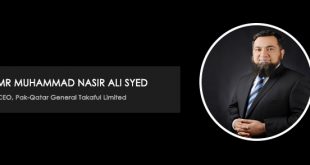Islamic finance during the past many decades has begun to progress in a great deal on the global front. Besides having the traditional Islamic finance markets in the Middle East, Western countries have also begun to see financial centers opening up. There is now more acceptance and recognition of this alternate financial system. The range and the scope of Islamic finance products over the years have also widened which now cater to the needs of various sectors of the economy.
Pakistan, having a population consisting of 95 percent of Muslims and a constitutional obligation to ensure the economic system free from Riba, has had a good response to Islamic finance. Pakistan is seen to be amongst the pioneers of Islamic finance as planning for a Shariah compliant financial system had begun as far back in the 1970’s with an attempt also being made in the 1980’s to bring the entire financial and banking system in the country to conform with Shariah principles.
Work done in the 1980 on the regulatory and legal front has been a source of guidance for a number of countries, which initiated Islamic finance in their country following this period. While attempts were made to transform the banking system of the country to comply with Islamic finance, limited success was achieved due to issues faced at the implementation and execution stages. Having been through this period, Islamic banking was then re-launched in 2001 in parallel to conventional banking allowing both kinds to co-exist and allowing customers to select a system which was more in accordance to their preference and choice.
The approach was successful in ensuring the success of Islamic banking in Pakistan and leading to its development. Pakistan’s Islamic finance industry has been growing at an annual growth rate of more than 30 percent over the past five years with a sustained growth period despite there being a significantly increased base. At present, Islamic banking is found in almost 80 districts in the country, having a network of 1,200 branches offering Shariah-compliant products and services. Islamic banking assets in the country constitute of around 10 percent of the entire banking assets in the country. Thus, the future outlook of the industry is considered to be extremely positive and with prospects the market share doubling by 2020.
At present, the market share for Islamic banking in the country stands at 10 percent which are said to be lower share in the financial sector it will be a long time till Pakistan is able to reach the 50 percent mark and if Pakistan were to aim to achieve this mark by 2020, it would have to achieve a 66.67 percent growth rate annually for the next 6 years. For this purpose, Islamic banks would have to take over 7.4 percent of conventional business on an annual basis for the next 6-year period as well. While such a task would definitely be a difficult one, but no doubt the target will be achieved only the steps be taken towards the right direction.
Mr. Saeed Ahmed, the newly-appointed Islamic Banking Deputy Governor at the State Bank of Pakistan seems to be relatively buoyant about Islamic banking. Thus it would definitely be interesting to see whether or not Islamic banking in the country would be able to achieve an equal market share by 2025 with conventional banking. In order for this to be made possible, Islamic banking assets would have to grow annually by 36.36 percent for the coming 11 years. During this period, the sector would also have to take over 4 percent of the business of conventional banks. Considering that for the past few years, Islamic banking in the country has been growing at an annual rate of 35 percent, this is definitely a realistic target, which could be aimed for and ultimately can be achieved.
While the potential for Pakistan to achieve a higher market share in terms of Islamic banking is very much present, it requires a lot of drive to be accomplished. Achieving such a target is possible given that the country has been achieving an annual rate of 35 percent in the past few years. Working at the same and higher pace with greater determination could possibly bring Pakistan up to achieve the 50 percent mark by 2020.
Being the regulator of the banking sector, the State Bank of Pakistan has over the years introduced and put into effect a number of regulatory reforms to ensure there stay put the financial stability and that the needs of the industry are met properly and in this regard a comprehensive and multi-tiered Shariah compliant framework has also been enforced to ensure that bank operations are compliant with Shariah principles. To further strengthen the prospects of Shariah in the country, a Shariah Governance Framework has also been developed, which defines the Shariah related roles and responsibilities of the key organs, which include the Board of Directors, the executive management and the Shariah Boards.
Islamic finance is an industry, which is still evolving and so is the understanding of the industry by the masses, policy makers as well as the business community making it understand and the need to promote it. Despite a great deal of improvement having been achieved over the last decade, a large segment of the population is still not thoroughly aware and doesn’t have the appropriate understanding of Islamic finance and therefore, they are unable to comprehend how different and easy it is in comparison to the conventional framework. Hence, apart from simply developing a supportive regulatory and supervisory framework, the State Bank of Pakistan is also engaged in ensuring that awareness for Islamic finance is created and capacity building initiatives are undertaken through its awareness campaign. Through these campaigns, targeted seminars and conferences would be held for the business community, policy makers, academia and bankers.
Thus the most important milestone to have been achieved in the past has been the launch of the industry via media campaigns, which have been done so with the guidance and support of the State Bank of Pakistan. The campaign is targeted to raise mass awareness among the masses through the use of electronic, print and digital media services.
 PAGE Blog Business Weekly Magazine
PAGE Blog Business Weekly Magazine

